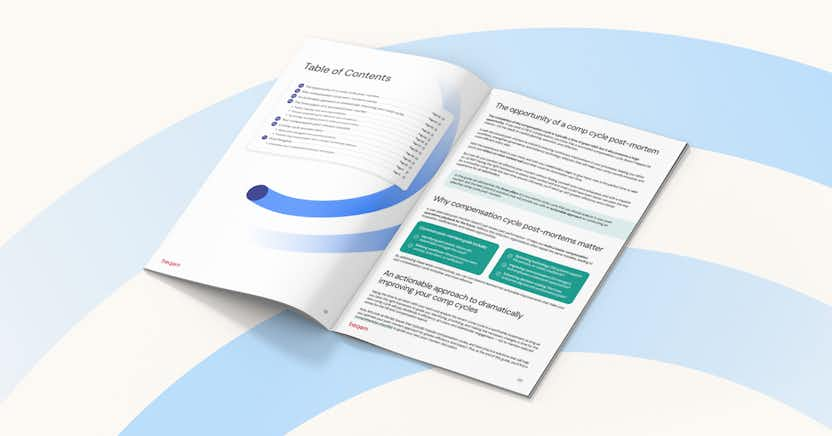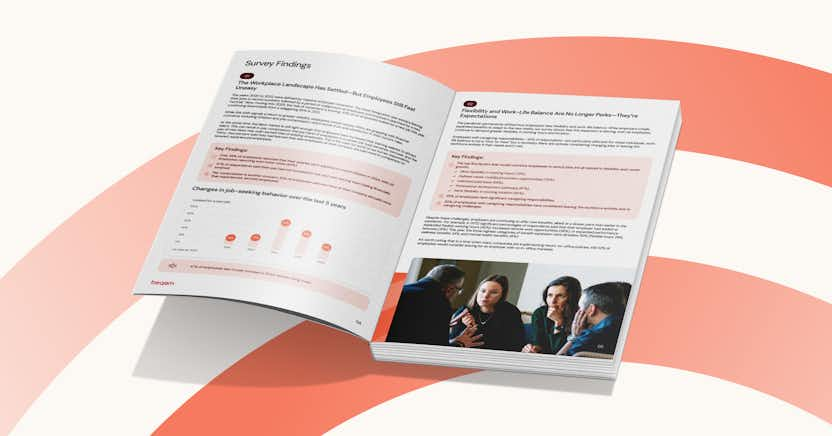The Importance of Pay Equity and How to Achieve It: A European Perspective

Pay equity and transparency are hot topics around the globe as new regulations emerge and companies seek to use the promise of fair pay to attract workers. The 2023 EU Directive on Pay Transparency adds new fuel to the fire for EU companies, and may well influence attitudes in the UK and foreshadow similar laws that have been proposed in the US and enacted in some states.
Why is equal pay becoming increasingly important in the EU and elsewhere, and what will it take for companies to achieve it?
The gender pay gap is real
Pay equity has long been a topic of debate in Europe, as women have historically been paid less than men, even when performing the same jobs at similar productivity levels. Though the gender pay gap is not as significant in many European countries as it is in the United States, where women in the workplace earn 82 cents on the dollar compared to men, a chasm does exist. According to the European Commission (EC), the EU pay gap is 13%, meaning women bring in 0.87€ for every 1€ earned by men. While in some developed nations like Italy (4.2%), Belgium (5.3%), and Spain (9.5%), the gap is much smaller, in others like France (15.8%), Finland (16.7%), and Germany (18.3%) the gap is wider than the EU average. In the UK, the gap is higher than the EU at 14.3%.
This isn’t to say that progress isn’t happening; strides are slowly happening. The pay gap has narrowed by 2.8% in the EU and 5.5% in the UK in the last decade. But EU directives on pay equity have existed for nearly 50 years. In 1975, equal pay for equal work requirements were instituted and later extended to social security programs in 1986. In 2007, the European Institute for Gender Equality was established, and more equality initiatives arrived in 2010. However, those agreements were non-binding and did not achieve the desired effect, so new regulations were enacted in May 2023. In the UK, the fight has taken a similar length of time. The Equal Pay Act of 1975, later superseded by the Equality Act 2010, made equal pay a legal requirement but has not eliminated the wage gap.
Why is there a gender pay gap?
There are numerous reasons the gender pay gap persists. EC statistics show women are outnumbered, with only 66% workforce participation compared to 76% of men. In the UK, there is a nearly 7% difference (72.3% vs 79%). According to EU statistics, many industries where women have high employment rates—including household and own-use production roles (88%), social work (78%), and education (72%)—are less lucrative than more male-dominated industries like construction or finance.
Also, women are more likely to be caregivers at the expense of earning more wages, and more children equals lower female workforce participation. The EC found that 29% of women work part-time, compared to 8% of men, and that participation gap expands from 7% for childless families to 17% for two-child families to 27% for families with three or more children.
To close the wage gap faster, employers must understand the importance of pay equity and institute strategies to eliminate the void. Below, we’ll look at the benefits of embracing pay equity and how to do so successfully.
Why equal pay?
Pay equity is no longer a nice-to-have; it’s a necessary strategic and competitive differentiator. A beqom study found that employees know how employers handle pay equity and believe there is room for improvement. More than half (54%) of UK employees say enough has not been done to close the wage gap, while 27% say their employer doesn’t take the matter seriously. They want openness, with 65% more willing to work at a company where pay gaps are publicized, 68% seeking external salary range disclosures, and 69% endorsing national transparency laws.
It’s not just about giving underpaid employees higher compensation that helps put food on the table and a roof overhead; the impact of pay equity and transparency echoes across the organization. Employees paid fairly and equally are happier, more productive and engaged, and more likely to remain with the company instead of leaving for greener pastures. Employee turnover is costly for organizations; an Oxford Economics study found that, in the UK, replacing one £25,000 salary costs more than £30,000. Customers and investors see how companies treat their employees and the values they hold; employers that don’t embrace equity open the door to legal action, reputational damage, and fractured relationships with stakeholders.
One of the reasons there is hope for pay equity progress is the new EU regulations, which mandate the following:
- Published salary ranges
- Previous compensation privacy
- Salary criteria
- Employer pay gap self-reporting by gender and sector
- Pay assessment and gap mitigation
- Consideration of intersectional factors
While many employers currently use some or all of these criteria, formalizing the provisions and implementing enforcement strategies adds a sense of urgency that didn’t exist previously and creates a more employee-centric work environment.
Embracing and achieving pay equity
Now that we’ve outlined the importance of pay equity initiatives, let’s look at how they’re designed and implemented with maximum cost-efficiency and impactfulness. But first, it’s crucial to understand that although equal pay seems straightforward and reasonable, there are challenges. Unconscious biases cloud judgment and lead decision-makers to undervalue employee contributions. Some industries adapt slowly to trends and rely on historical data rife with disparities to govern compensation practices. Lack of communication between employers and employees keeps pay structures secret and employees guessing about salary decisions. Enterprise organizations with convoluted hierarchical structures struggle with consistency across departments and the impact of cultural differences. Inadequate data and analytics tools can leave organizations struggling to pull valuable insights that inform pay equity assessments
Pay equity is a dynamic exercise that requires an intentional, data-driven, and flexible approach. Organizations must ask themselves the following nine questions:
- What is our current pay equity status?
- What are our goals?
- How should we measure progress?
- How do we integrate pay equity into HR strategy?
- Do our performance management processes support pay equity?
- Do our compensation processes support pay equity?
- How do we ensure trust and transparency?
- What support systems do leaders and managers require?
- What tools or technology are required to support our efforts?
A necessary undertaking
Eliminating gender wage gaps is a process that requires buy-in from everyone. This is not a one-time, overnight solution — it requires a long-term commitment from the C-suite down to entry-level employees. For employers, the Equality Act and new EU regulations present potentially expensive investments and complex challenges, but the cost of doing nothing is far more significant and more damaging to organizational reputation and the bottom line because these regulations are not going away. European employers with a global footprint must be particularly aware as other countries strengthen their pay equity requirements.
Without action, pay gaps will continue to widen. Employers must consider the entire picture: wage inequities don’t just impact employees at work; they affect friends and loved ones, socioeconomic status, mental, physical, and emotional health, and much more. For European organizations, it’s time to embrace fair, equal, and transparent compensation practices today.
If you want to explore the transformative potential of pay equity and uncover the many benefits it can deliver to your organization, contact us at beqom to speak with a pay equity expert.















